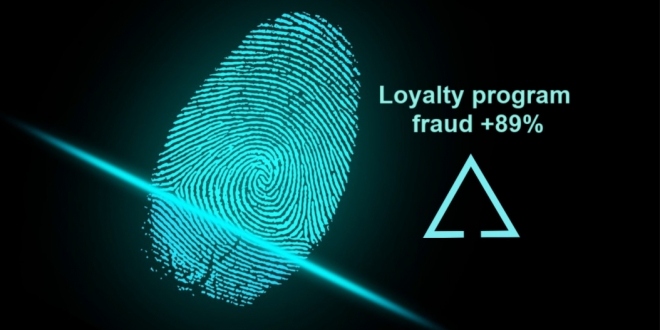When it comes to loyalty program fraud, merchants are unprepared, and consumers are uninformed about the risk to their personal information and their hard-earned rewards according to e-commerce fraud prevention experts Forter.

Loyalty program fraud is growing fast and merchants are simply not ready to prevent attacks:
- 42% of companies surveyed say they lack the skills required to prevent fraud and abuse
- Nearly 50% report insufficient resources, and loyalty program account fraud prevention is considered a low organizational priority.
Loyalty program fraud up 89%
Loyalty programs have grown steadily in the past decade. Memberships increased by nearly 10% in the past year and consumers have accumulated $48 trillion of unspent loyalty points globally. Surprisingly, nearly half (45%) of loyalty program accounts are inactive, with consumers not monitoring or redeeming their points.

According to Forter, loyalty program fraud rose 89% in the past year, mostly due to the increase in the number of data breaches with a large amount of personally identifiable information at risk to fraudsters.
Direct and indirect losses from loyalty and reward points fraud are estimated by the company to cost businesses more than $1 billion every year.
Fraud targets shifting
Businesses are struggling to limit damage as fraud attacks shift from the point of transaction to other points of weakness in the changing buyer journey, including new account signup, logins, and promotion and coupon use.
“The combination of consumers not paying attention to their accounts and merchant lack of preparation is a big reason fraudsters find loyalty and rewards programs so alluring. It is clear that loyalty program accounts are low hanging fruit for fraudsters,” said Michael Reitblat, CEO and Co-Founder of Forter.
Loyalty program areas of risk
Cybercriminals typically attack loyalty programs in several ways including:

- Account takeover: hacking into member accounts, exploiting accumulated points and payment instruments saved in the account.
- New account fraud: creating fake accounts, often using stolen identities and accumulating, storing, selling, and redeeming stolen points.
- Policy abuse: oversharing coupons or promotional codes, violating merchant policies and illegitimately gaining program rewards.
“Loyalty program points are a currency as valuable and untraceable as cash, and fraudulent activity in these accounts causes damage to brand reputation and monetary losses to merchants and consumers alike,” Reitblat added.
New loyalty program fraud prevention solution
In an effort to help businesses reduce loyalty program losses and minimize risk, Forter has introduced a loyalty fraud prevention solution. The service protects loyalty programs from all types of fraud and abuse in real-time, including transactional fraud, account-based fraud, and policy abuse.

“Merchants need to fight fraud together. Forter’s Loyalty Program protection solution gives merchants the only fully integrated fraud protection platform that protects 100% of the customer journey, not only at the point of transaction,” said Reitblat.
With loyalty program fraud growing fast, this should be a welcome addition to the fraud protection toolkit for savvy loyalty programs and e-commerce risk managers.
Forter was recently named the Leader in e-commerce fraud prevention by Frost & Sullivan and is backed by $100M of capital from VCs including Sequoia, NEA, and Salesforce. You can find out more about Forter loyalty program fraud prevention here.








LET’S CONNECT